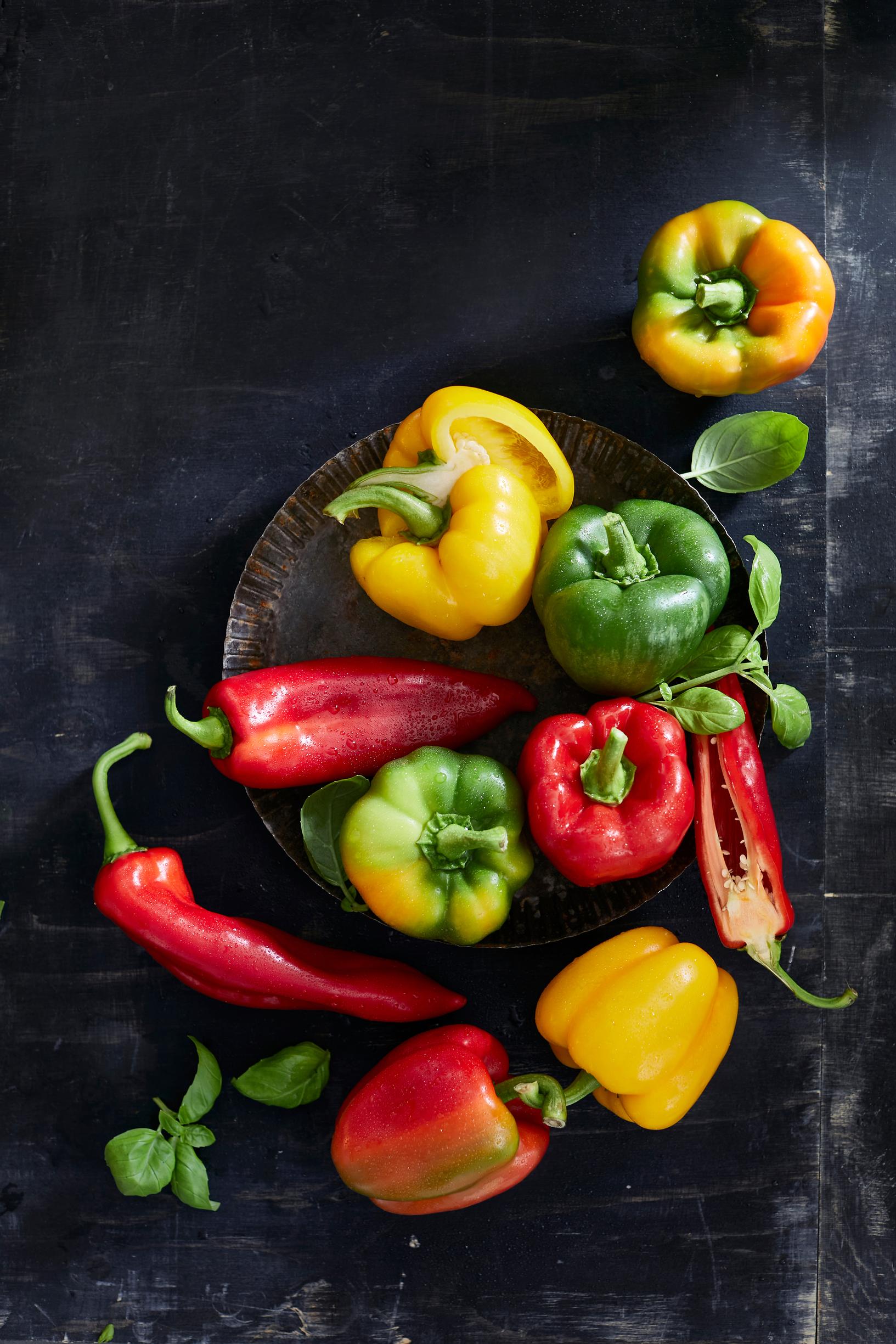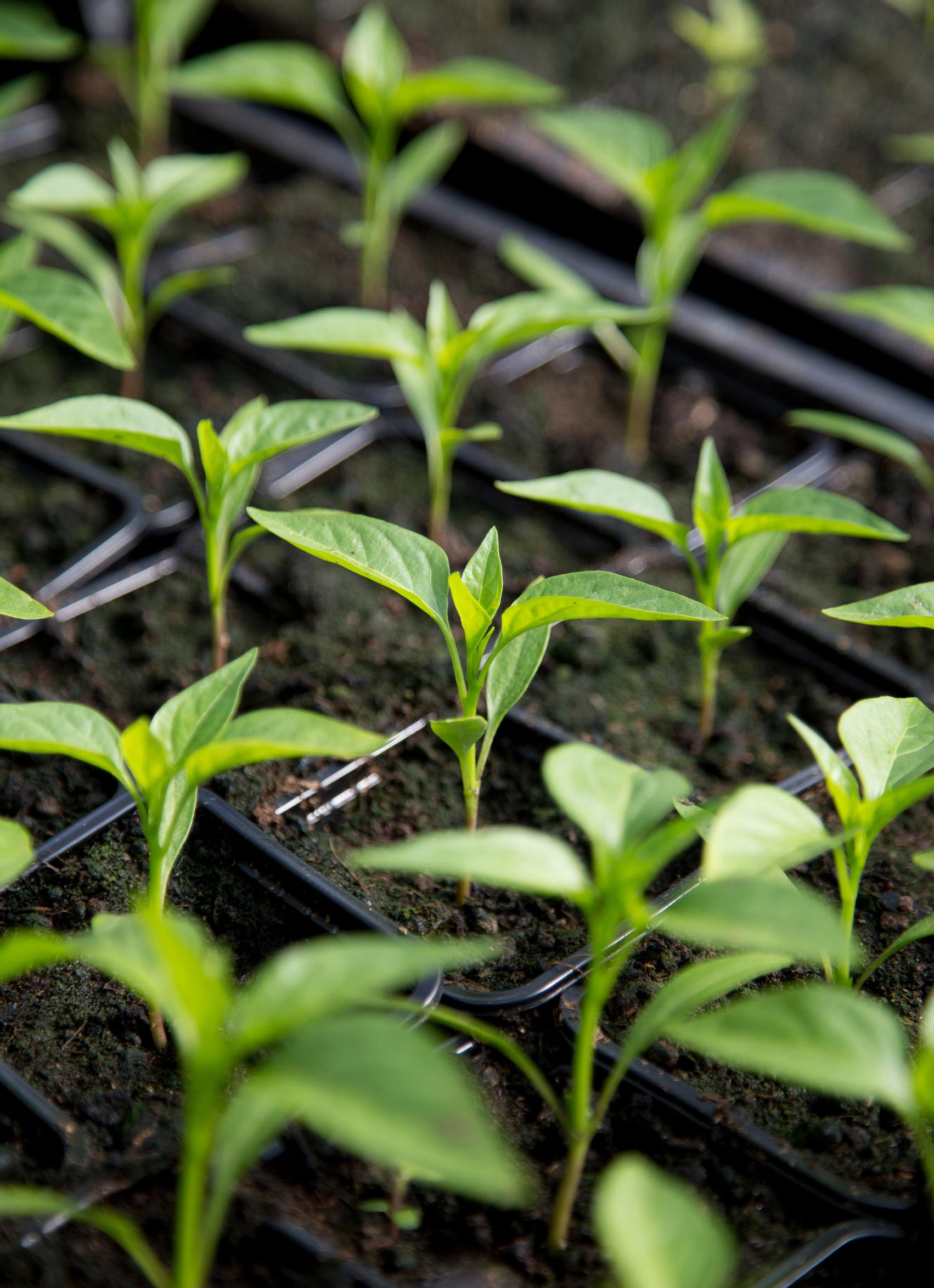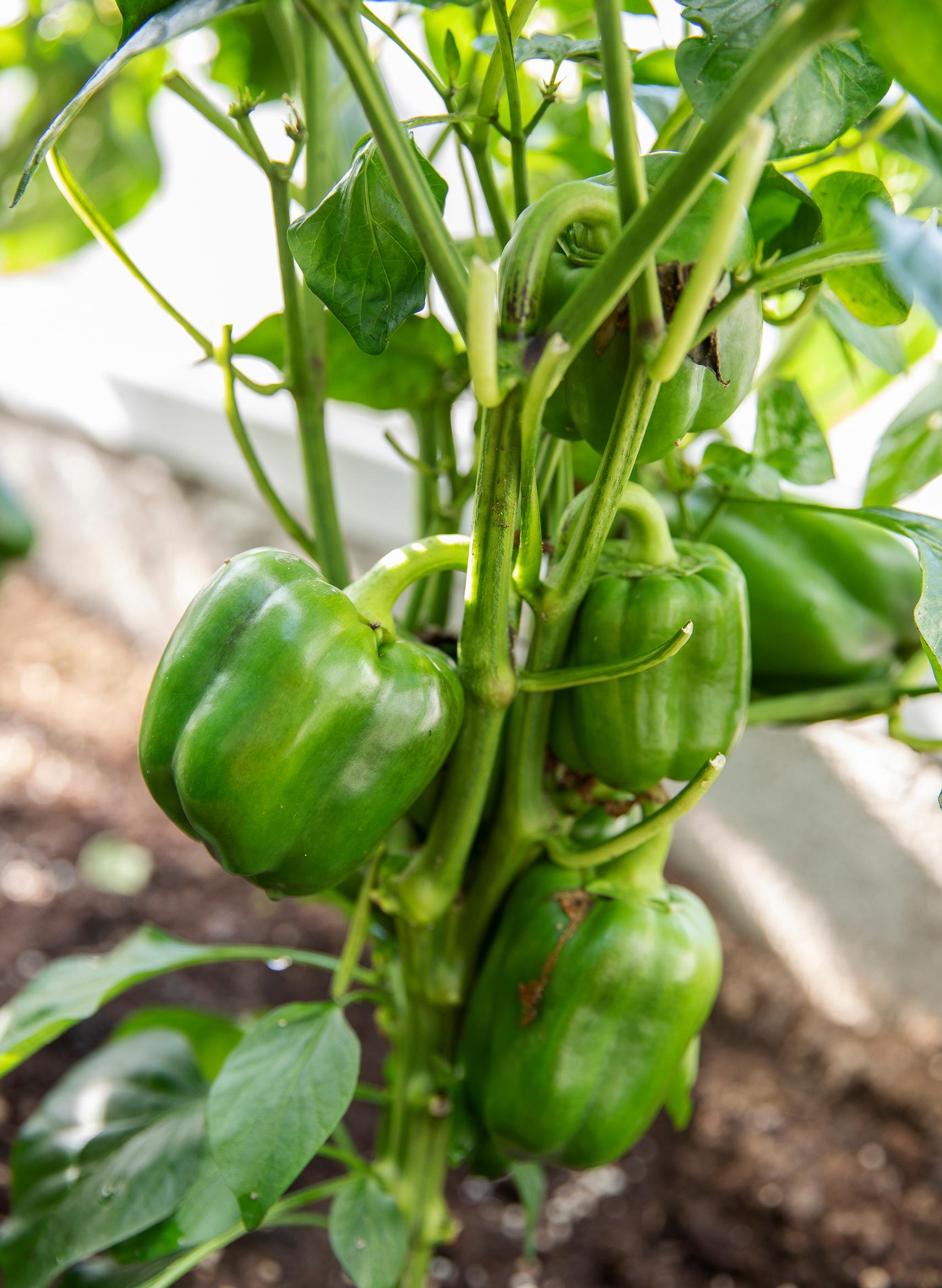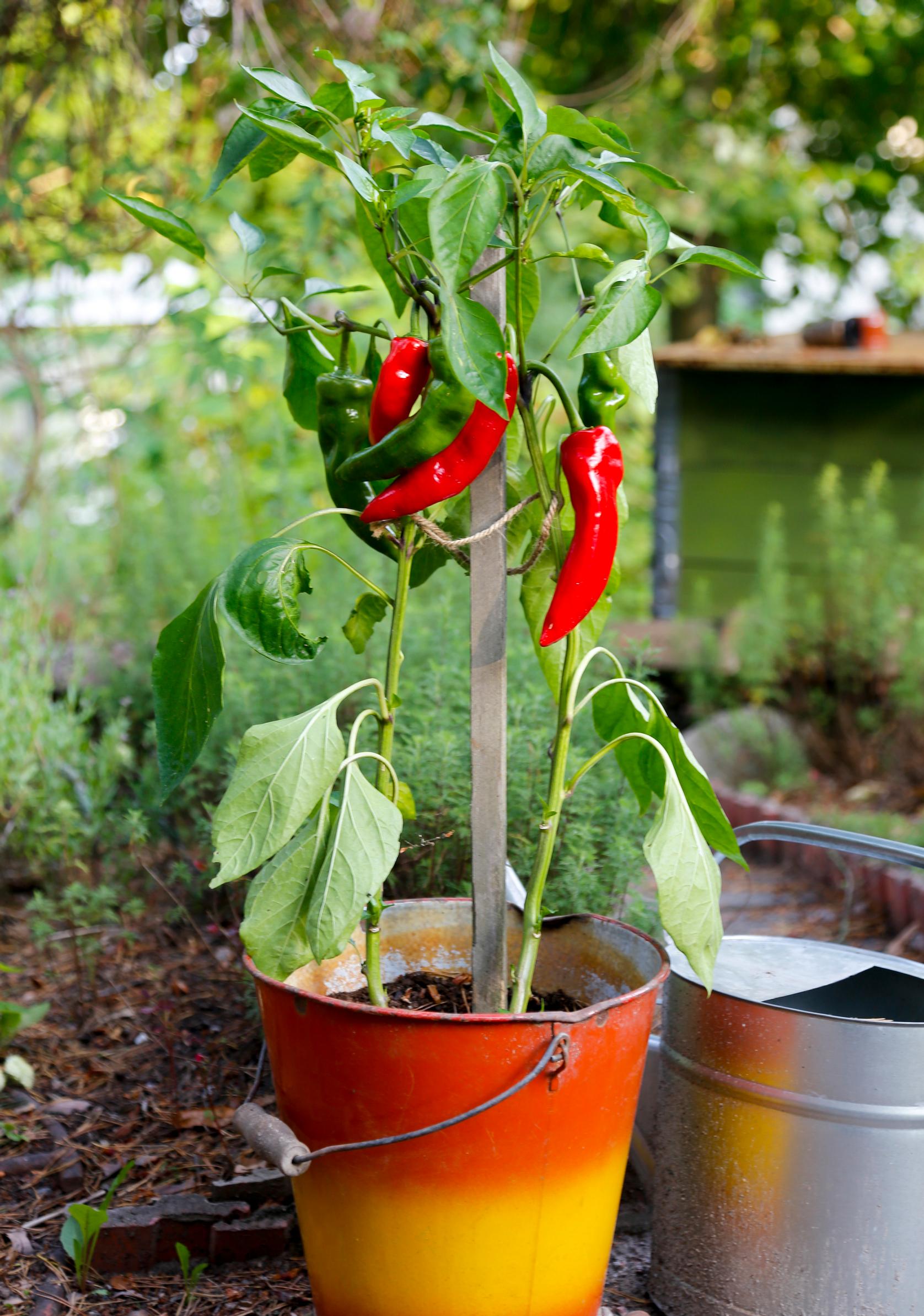
Growing bell peppers requires light, warmth, and consistency—meticulous care rewards you with a delicious harvest
Bell peppers can be grown not only in greenhouses but also on balconies, windowsills, and warm terraces. This sweet treat requires plenty of warmth and care to thrive.
Growing bell peppers
Soil for bell peppers
During the seedling phase, use a mild, unfertilized seed-starting mix. Later, regular limed and fertilized garden soil or pre-fertilized growbags are suitable. The ideal pH is 6–7.
Light requirements for bell peppers
In low light conditions, pepper flowers may drop off without forming fruit. Shedding flowers is the plant’s way of regulating the fruit quantity. Young fruits wither if the plant doesn’t have enough energy to grow them.
Ideal growing location for bell peppers
In addition to abundant light, peppers need a warm and sheltered spot. The optimal temperature for growing peppers is between 21–30 degrees Celsius. The temperature should be at least 15 degrees; otherwise, the plant will suffer and stop growing, so ensure the peppers’ growing area stays warm.
Peppers can be grown not only in a greenhouse but also on glazed balconies, windowsills, warm terraces or warm spots near walls, and even in the outdoor garden. When grown in the garden, the location must be very sheltered and warm. Also, choose an undemanding and fast-growing pepper variety, and be prepared to protect it with horticultural fleece or a plastic cover.
Many bushy varieties of peppers are suitable for balcony cultivation in pots. In the greenhouse, peppers thrive when grown near basil and onions.

Pre-cultivating bell peppers
Begin seedling cultivation between January and March. Early sowing is beneficial for chili varieties with a long growing season, such as rocoto peppers and Capsicum chinense. Early sowing usually requires additional light since natural light isn’t sufficient for seedlings yet. Seedlings that receive too little light become spindly.
Sow seeds into light, fluffy seed-starting mix in boxes or pots, planting 1–2 seeds per pot. Seeds germinate fastest at 25–29 degrees Celsius. Bottom heat promotes germination, so place the pots in a bathroom with underfloor heating, for example, until the seedlings emerge.
When the seedlings sprout, move them to a bright location. Provide additional light for the seedlings at least during January–February; natural light is often sufficient from March onwards.
Transplant the seedlings from pots to larger containers when they have several true leaves. Gradually acclimate the seedlings to outdoor conditions early in the season. Protect the seedlings with garden fleece and, depending on the species, avoid temperatures below 5–10 degrees Celsius. If you can’t pre-cultivate, you can by seedlings at garden centers later in the spring.
Peppers are sensitive during their seedling stage, so avoid overwatering and over-fertilizing, cold and wet soil, and drastic changes in conditions. These can halt growth and cause leaves to yellow.

Planting bell peppers
Plant the seedlings into the greenhouse bed or a pot of at least 10 liters. Large-fruited varieties need a 20–30-liter container. The soil volume determines the plant’s size and yield. Peppers can also be planted in water; hydroponic cultivation is popular among chili enthusiasts as it speeds up harvest.
Pinching bell peppers
Cut off the pepper’s top shoot with scissors or a knife if you want the plant to branch and bush out. You can decide the timing yourself. A natural time to pinch peppers is when the first flower appears. It’s advisable to remove it, and at the same time, trim the top of the pepper seedling to promote branching and increase yield.
Supporting bell peppers
The tallest sweet pepper varieties require staking, as the fruits can cause stems to break. Support the pepper’s stems with stakes and strings.
Bell pepper flowers are self-pollinating, but cross-pollination is beneficial. If you want to collect seeds of a specific variety, pollinate the flowers with a brush and protect them with a fleece hood.
Caring for bell peppers
Watering and fertilizing bell peppers
Water, mist, and fertilize your peppers consistently. You can apply fertilizer every couple of weeks during watering. Some gardeners like to add a slow-release fertilizer to the soil during planting. Start fertilizing a couple of weeks after potting, when the seedling has started growing well. Fertilize seedlings cautiously with a nitrogen-rich nutrient. When you want your plant to bloom, switch to a potassium-rich vegetable plant fertilizer. The goal is a large plant with enough energy to produce a big harvest.
Bell pepper pests
Aphids, greenhouse whiteflies, and spider mites [in Finnish] are very fond of peppers. Keep an eye out for pests, especially in the greenhouse and on windowsills. You can prevent spider mites by misting the undersides of leaves with water and ensuring proper watering. Avoid subjecting your peppers to drought. You can use general-purpose pesticides on pepper pests according to package instructions.
Harvesting bell peppers
Pick the first fruits while they’re still unripe to allow the plant to produce new ones. This will result in a larger harvest.
Did you know?
The spiciness of peppers is measured on the Scoville scale: the mildest are sweet peppers (0) and the hottest are chilies (3,000–200,000). Capsaicin, which causes heat, is most concentrated in the white parts inside chilies where the seeds are attached.

Bell pepper varieties
Peppers are versatile nightshade plants. The amazing range of flavors varies from floral to fruity to umami. There is a vast array of pepper seeds available, and among the different varieties, there are surely ones worth trying for both beginners and experienced gardeners. Among sweet peppers, the most reliable are the early and small-fruited varieties. Seed companies’ pepper selections vary slightly annually, but every year they offer a wide range of varieties.
Pepper varieties are divided into chilies, sweet peppers, and wild species.
- Chilies: Thousands of varieties with varying heat, flavor, growth habits, and requirements. They can grow into sprawling plants several meters tall.
- Sweet peppers: Sweet and mild, with various colors from pale to chocolate brown. Most reliable yield in a greenhouse.
- Wild species: Chilies appreciated by enthusiasts. There are about 30 species, some easy and some demanding.
Examples of varieties
- Capsicum annuum Grossum group ‘Snacking Purple’: A low-growing, small-fruited purple sweet pepper. Suitable for pot cultivation.
- C. baccatum ‘Lemon Drop’: A popular and reliable chili variety. The flavor is medium-hot with a lemony aroma. Also known as ‘Hot Lemon’.
- C. baccatum ‘Aji Benito’: A prolific, early, medium-hot, and easy chili variety that can be grown outdoors and on windowsills.
- C. annuum Chili group ‘Vampire’: A dark-leaved, early, and hot chili variety. Unripe fruit is black; ripe fruit is red.
- C. chinense ‘Pink Habanero’: A mild and aromatic habanero-type pepper. Requires plenty of light.
- Compact and low-growing peppers: ‘Barancio’, ‘Hamik’, ‘Mohawk’, ‘Redskin F1’.
- Peppers with oblong fruit: ‘Lipari F1’, ‘Long Red Marconi’, ‘Puztagold’, ‘Thor F1’.
- Peppers with round fruit: ‘Alexander’, ‘California Wonder’, ‘Golden Calwonder’.
Source for parts of this article: chiliyhdistys.fi.


